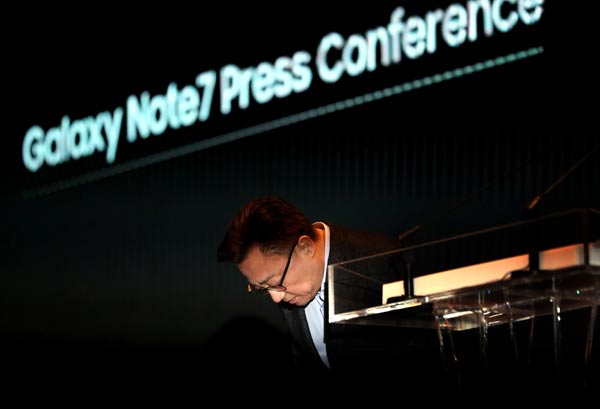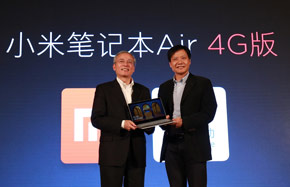'Battery problems to blame for recall'
 |
|
Koh Dong-jin, president of Samsung Electronics' mobile communications business, bows during a news conference in Seoul on Jan 23, 2017. [Photo/Agencies] |
Samsung Electronics Co Ltd said on Monday flaws in battery manufacturing and design have led to the global recall of its flagship model the Galaxy Note 7.
Koh Dong-jin, Samsung's mobile division president, said at a news conference it was the battery, not the device itself or software, that had caused the business crisis. The recall was estimated to cost more than $6 billion.
After testing more than 200,000 Note 7 smartphones, the company found defects in two separate sets of batteries that caused overheating and even fires.
The first batch of Note 7 batteries were manufactured by a unit of Samsung.
In those phones, the battery was too large for the casing of the phone.
Replacements and the batteries for the Note 7 sold in China were from Amperex Technology Ltd, a Chinese manufacturer.
But as Samsung was in a rush to get the new phones out, the new battery also had a defect.
That is also the reason why China was not among the first group of countries taking part in the recall of the Note 7, Koh said.
"We initially did not realize the second batch of batteries also have problems," he said, apologizing for the delay and ineffective communication with Chinese consumers.
The announcement came as Samsung is losing ground to opponents Huawei Technologies Co Ltd and Oppo Electronics Corp in China, the world's largest smartphone arena.
Xiang Ligang, a smartphone expert and CEO of telecom industry website cctime.com, said Samsung's explanation will not help the South Korean firm recover its glory in China.
"It may work in other markets, but the competition in China is too intense and there are too many alternatives for Samsung's handsets," Xiang said.
According to him, Samsung now ranks as the sixth-largest player in China.
Nicole Peng, research director at global consultancy Canalys, said Samsung's high-end products, in fact, resonate quite well with Chinese consumers.
"The problem lies in its mid-range gadgets, which can't compete with local players. It needs to beef up efforts in marketing and retailing channels," Peng said.
Fan Feifei contributed to this story.

















